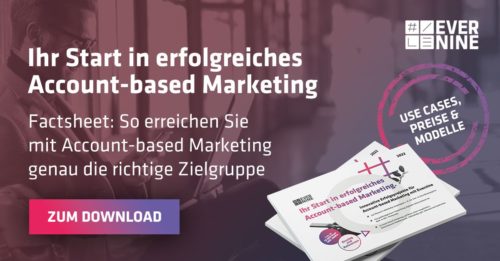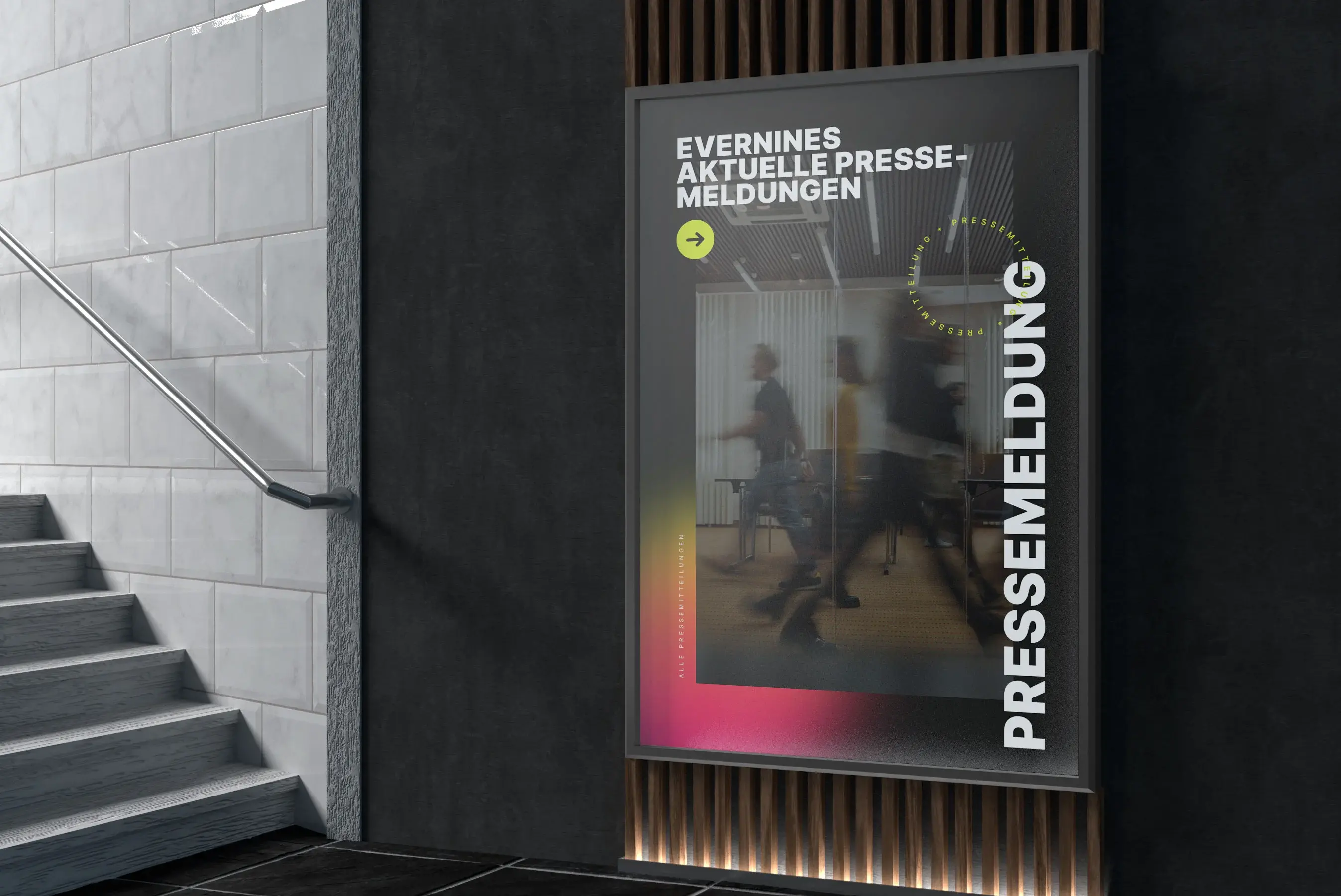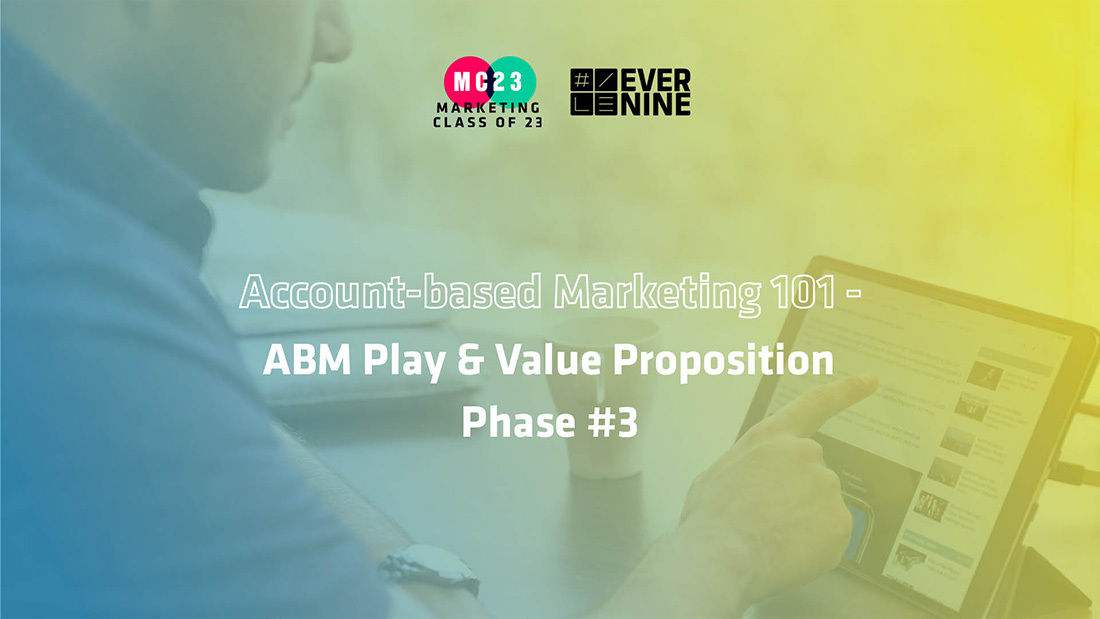
Account-based Marketing 101 – Phase 3: ABM Play & Value Proposition

by Sven Blaukat
Part 1 of the 6-part ABM series: >>Link<<
Part 2 of the 6-part ABM series: >>Link<<
An often underestimated part of account-based marketing (ABM) is the careful preparation and adaptation of all content to the desired target group. As part of our #MarketingClass23, we are presenting the different phases of ABM in more detail in a series of articles. This time it's about “ABM Play & Value Proposition”.
In the first two parts of the ABM MarketingClass series, important preparations were discussed, such as the definition of objectives and segmentation of buyer groups.
The third part deals with adapting the content of products or services to the needs of individual accounts or the corresponding segmentation in order to draw attention to specific challenges, build thought leadership and partnerships and ultimately offer a solution.
A 1:Few campaign is considered here as an example (ABM Lite). The same principles apply to strategic ABM measures (1:1), but they are more focused on individual companies and people. Company-specific factors such as personality types, interests and public image are examined.
Various studies show that in the B2B sector, around 70% of the purchasing decision process is already completed before contact is made by sales or the provider. However, this does not necessarily apply to complex projects. It is therefore important to know what information buying committees normally need.
SWOT-Analysis
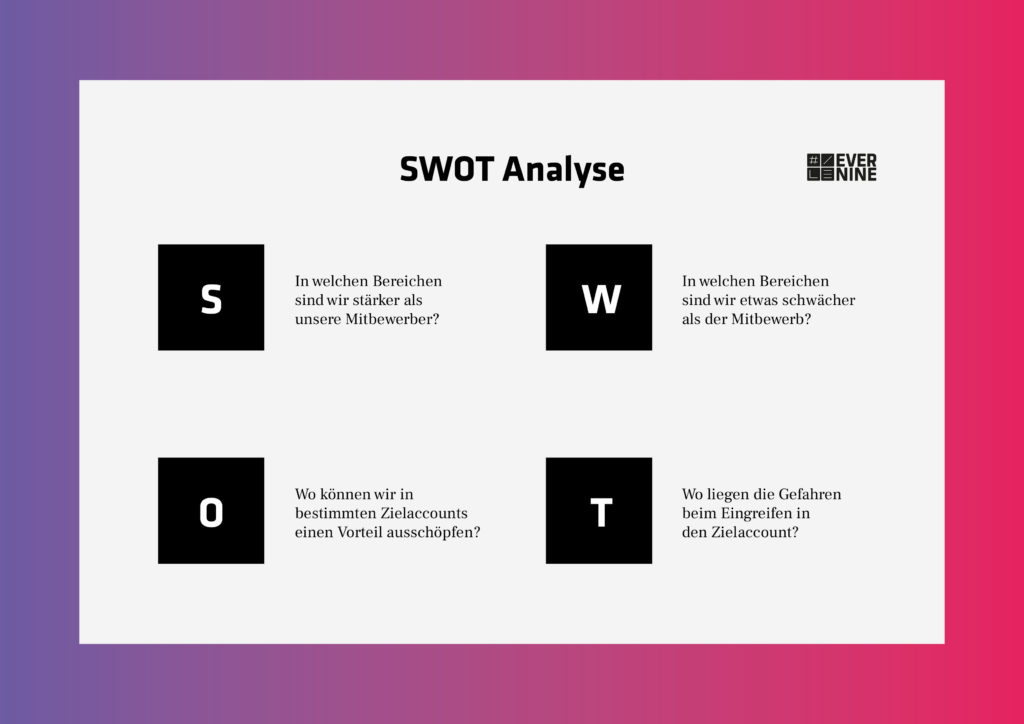
It is recommended to carry out a classic and honest SWOT analysis, also in relation to the competition, in order to work out differentiating features for the account list. The factors and their implications for the customer of your product/solution should be clearly identified by category.
ABM Play creation
The “ABM Play” is necessary because an individual roadmap must be developed for each customer, segment or buyer group. Careful preparation of the play makes it possible to communicate the unique advantages of the products/services for each customer in a customized way and to present the differentiation from the competition. It helps to focus on promising topics.
The GE McKinsey Directional Policy Table can help to prioritize the topic (example):
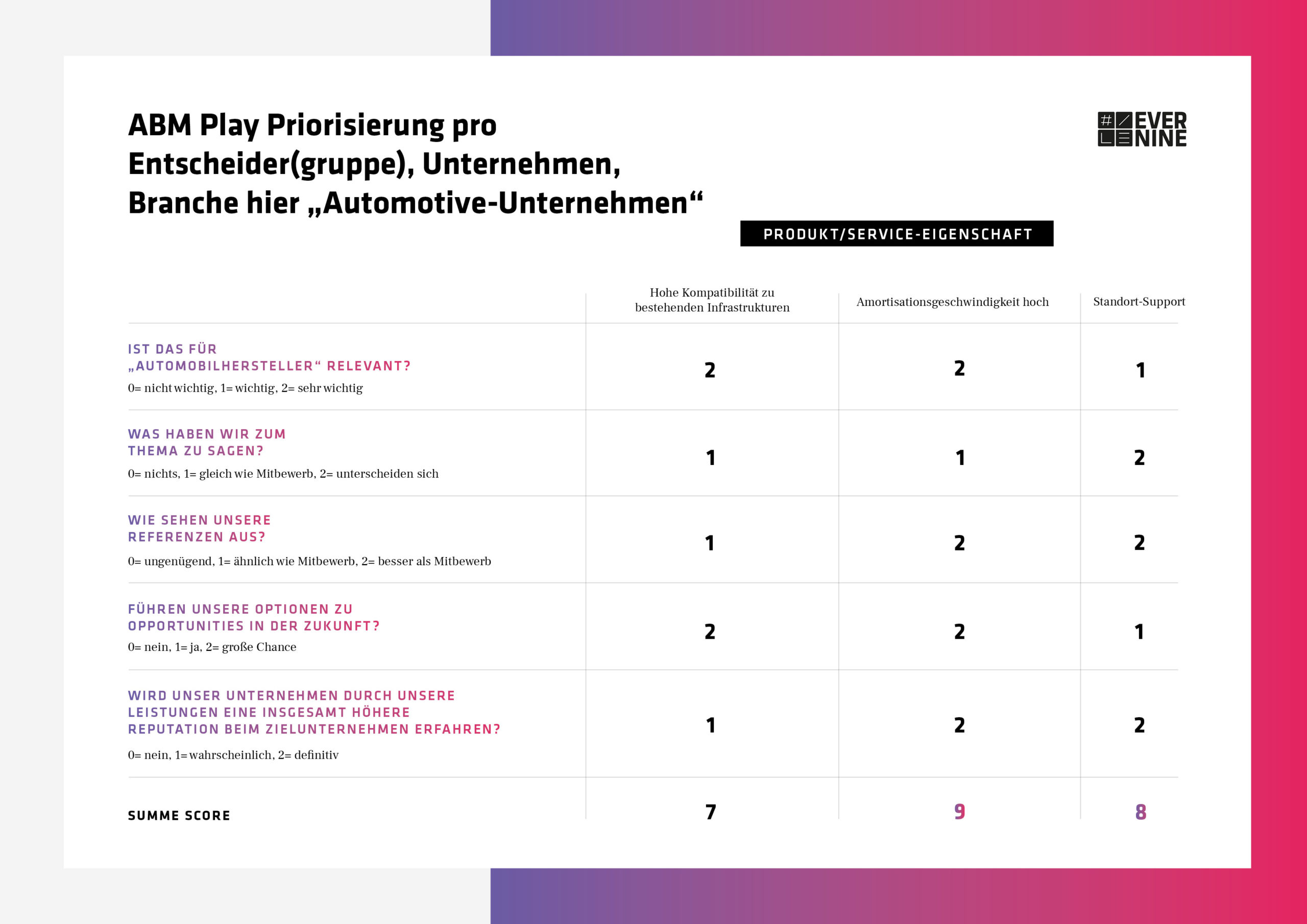
Messaging development
The messaging is now prepared by defining a detailed value proposition for each pre-defined persona / decision-maker / influencer group separately (workshop if necessary). The added value is weighed up against pain points and divided up among the decision-maker segments. Content specialists use the results to create a messaging framework that is divided into several phases of the customer journey (awareness, education/evaluation, justification). The messaging is later translated into advertising material, landing pages and content assets. It is a good idea to think about a suitable visual theme for the ABM campaign as early as possible to ensure recognition value during the campaign. A lot of time must be planned for this part, as the content leads to the trigger points that lead to interested parties and business opportunities.
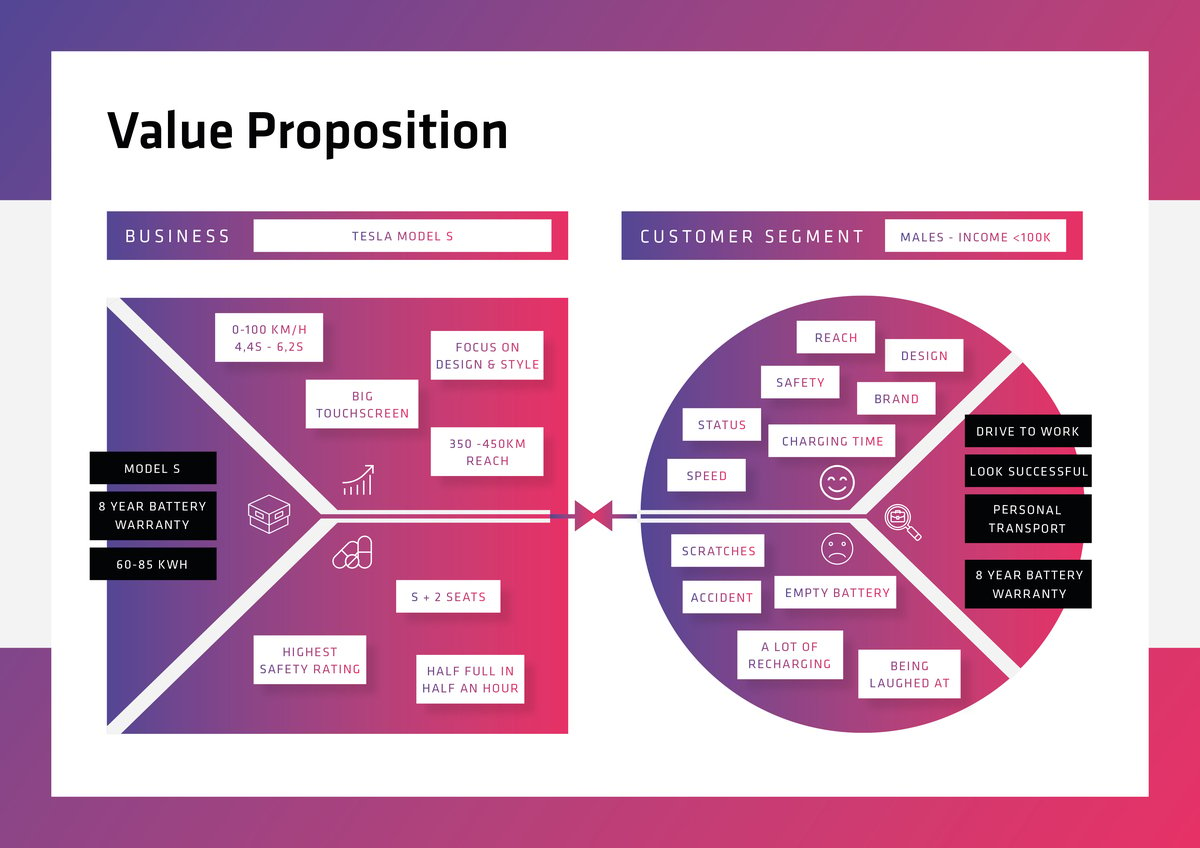
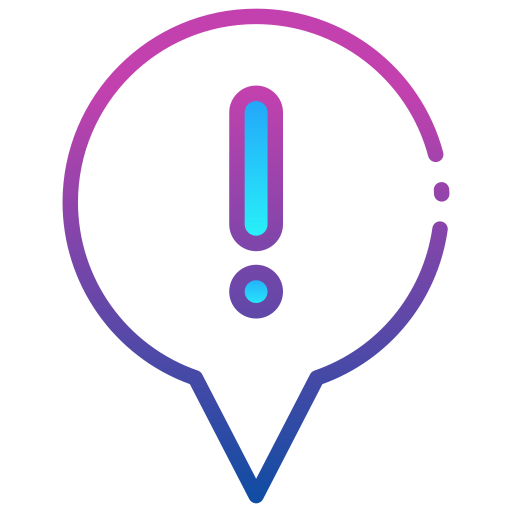
Tip: Say goodbye to perfectionism, especially if you do not yet have much ABM experience. Try & error phases must be planned in. The more experience you have, the better the responses per segment will automatically improve.
As soon as the various messages have been roughly defined, segmented and planned based on the customer journey, the question arises as to what to do with them. At this stage, it makes no sense to create all the advertising material, download assets or videos/webinars etc. already. Part 4 of this series will explain why this is the case and what the next step is. Then it's all about the activation plan.
Download our free factsheet here. 💥
➡️ Generate the leads you really want to reach, especially in the management and IT management target groups.
➡️ Benefit from best practices from the business IT, digitalization, pharmaceutical and sports & health sectors.
